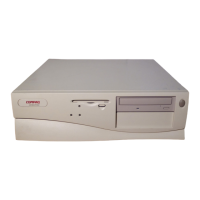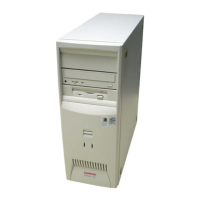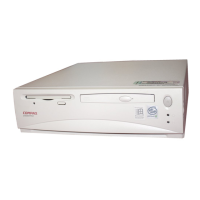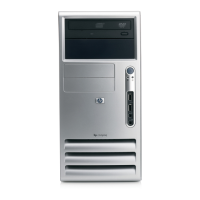Chapter 4 System Support
Compaq Deskpro 4000 and 6000 Personal Computers
featuring the Pentium II Processor
First Edition - October 1997
4-4
4.2.2 PCI BUS MASTER ARBITRATION
The PCI bus supports a bus master/target arbitration scheme. A bus master is a device that has
been granted control of the bus for the purpose of initiating a transaction. A target is a device that
is the recipient of a transaction. Request (REQ), Grant (GNT), and FRAME signals are used by
PCI bus masters for gaining access to the PCI bus. When a PCI device needs access to the PCI
bus (and does not already own it), the PCI device asserts it’s REQn signal to the PCI bus arbiter
(a function of the system controller component). If the bus is available, the arbiter asserts the
GNTn signal to the requesting device, which then asserts FRAME and conducts the address
phase of the transaction with a target. If the PCI device already owns the bus, a request is not
needed and the device can simply assert FRAME and conduct the transaction. Table 4-1 shows
the grant and request signals assignments for the devices on the PCI bus.
Table 4–2.
PCI Bus Mastering Devices
Table 4-2.
PCI Bus Mastering Devices
REQ/GNT Line Device
REQ0/GNT0 PCI Connector Slot 1 and Slot3 [1]
REQ1/GNT1 PCI Connector Slot 2
REQ2/GNT2 SCSI Controller
REQ3/GNT3 Network I/F Controller
REQ4/GNT4 PCI Connector Slot 4
NOTES: [1] These devices share the REQ/GNT signals through additional logic.
PCI bus arbitration is based on a round-robin scheme that complies with the fairness algorithm
specified by the PCI specification. The bus parking policy allows for the current PCI bus owner
(excepting the PCI/ISA bridge) to maintain ownership of the bus as long as no request is asserted
by another agent. Note that most CPU-to-DRAM and AGP-to-DRAM accesses can occur
concurrently with PCI traffic, therefore reducing the need for the Host/PCI bridge to compete for
PCI bus ownership.
The PCI bus arbiter of the 440LX includes a Multi-Transaction Timer (MTT) that provides
additional control for bus agents that perform fragmented accesses or have real-time access
requirements. The MTT allows the use of lower-cost peripherals (by the reduction of data
buffering) for multimedia applications such as video capture, serial bus, and RAID SCSI
controllers.
The 440LX and the 82371 support the passive release mechanism, which reduces PCI bus latency
caused by an ISA initiator owning the bus for long periods of time.
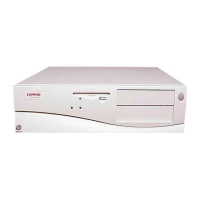
